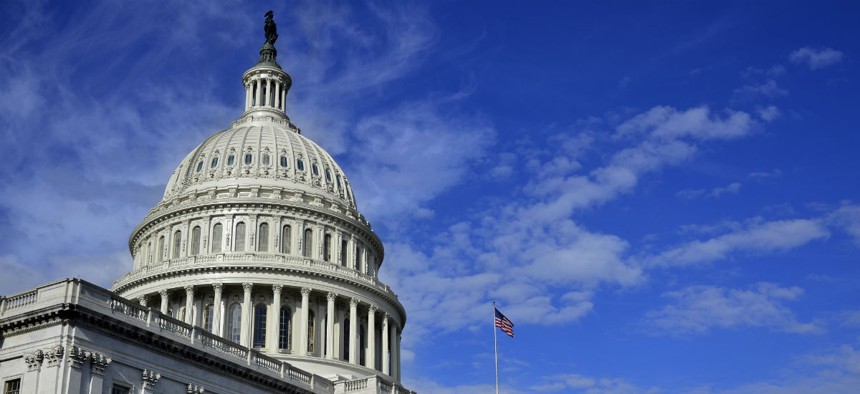Trump Renews Shutdown Threat as Congress Considers Spending Bills
Spending package with provisions on a 2019 pay raise is in conference negotiations between the House and Senate.
President Trump on Wednesday revived his on-again off-again threat to trigger a government shutdown if lawmakers do not appropriate more money for his proposed wall along the U.S.-Mexico border.
“If it happens, it happens,” Trump told reporters during a meeting with congressional leaders. “If it’s about border security, I’m willing to do anything. We have to protect our borders. If we don’t protect our borders, our country is not going to be a country. So if it’s about border security, I’m willing to do what has to be done.”
Those comments came just a day after Trump suggested in an interview with the Daily Caller that he would not consider vetoing appropriations bills.
“I don’t like the idea of shutdowns,” Trump said Tuesday. “I don’t see even myself or anybody else closing down the country right now.”
Congress must approve—and Trump must sign—four consolidated appropriations packages, or "minibuses," by the end of September to keep federal agencies open.
On Capitol Hill, Republican leaders have discouraged the president from taking the path of a shutdown, fearful that it would hurt vulnerable lawmakers in November’s midterm elections. And the Huffington Post reports that they have all but conceded that Congress will be unable to increase funding for the border wall before the end of this year.
The Senate has passed three of the four minibus bills, with the only package outstanding being the one that contains funding for the Homeland Security Department and the proposed border wall. Politico reported Monday that Congress could appease Trump by approving a short-term funding measure in place of the fourth minibus, with a promise to consider it after the election.
In the meantime, lawmakers in the House and Senate are in negotiations to iron out the chambers’ differences in the other appropriations bills. On Wednesday, the conference committee to consider the first minibus, which includes funding for Energy and Water, Military Construction and Veterans Affairs and the legislative branch (H.R. 5895), held its first public meeting.
And on Tuesday, the House sent an $857 billion spending package for the Defense, Labor, Education, and Health and Human Services departments (H.R. 6157) to conference committee. The House on Thursday sent the third minibus, which includes appropriations for the Interior, Environment, financial services and general government (H.R. 6147) to conference.
The Senate version of the financial services minibus includes a 1.9 percent pay increase for federal civilian employees in 2019. The House had approved a similar spending package that did not include any language on federal compensation, which effectively endorsed the Trump administration’s plan to freeze federal employees’ pay in 2019.
Although negotiations are just beginning formally this week—with a tight deadline of nine legislative days before the shutdown deadline—congressional aides said that staff conversations on how to reconcile differences in the chambers’ bills have been ongoing.
Adding to the complexity of these negotiations was Trump’s apparent waffling on whether to provide federal workers a raise in 2019. Just one day after formally issuing an alternative pay plan that would freeze pay at 2018 levels for civilians next year, Trump suggested he would “study” the issue.
Other potential sticking points include House proposals to include work requirements for beneficiaries of the Supplemental Nutrition Assistance Program and changes to the Affordable Care Act, said Sen. Patrick Leahy, D-Vt., ranking member of the Senate Appropriations Committee, in a statement Thursday.
“I have said many times that if we are to have a strong national defense, we need to have a strong economy, an educated and healthy citizenry, and an able workforce,” Leahy said. “The programs funded in the Labor, HHS, and Education appropriations bill are critical to achieving that. The deep ties that run between defense and non-defense priorities make it fitting that we have packaged these two bills together, but they must remain together if we are to get them across the finish line by October 1.”








